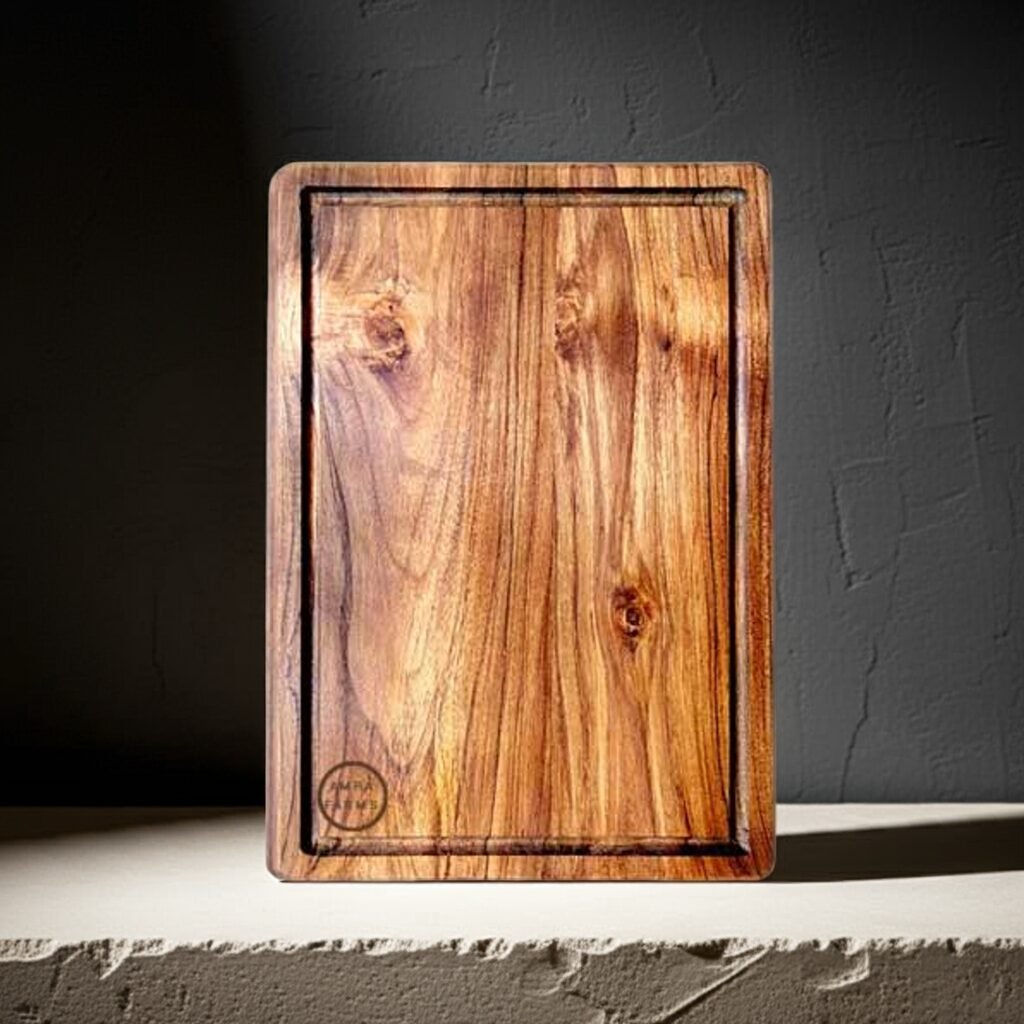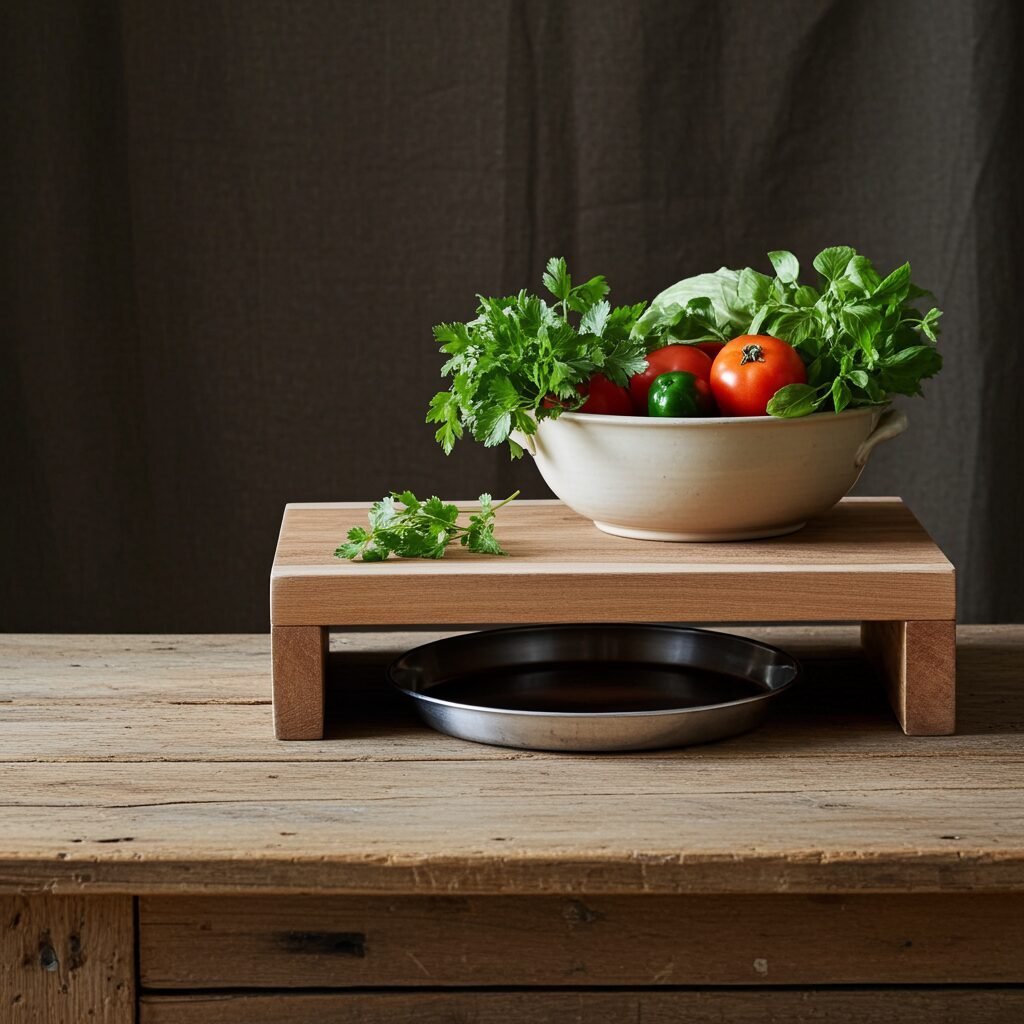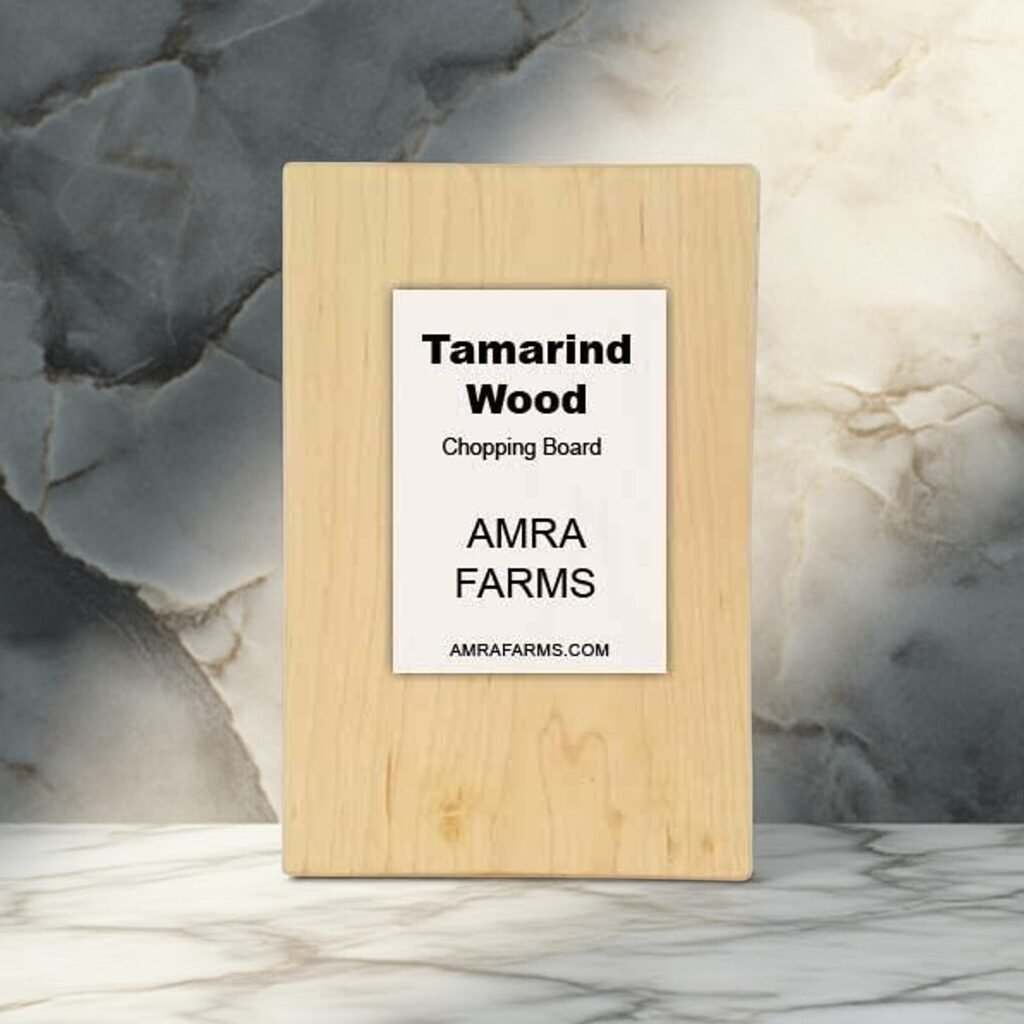Your cart is currently empty!
The Safest Cutting Board Material – which chopping board material is good for health?
Purchasing a cutting board has become difficult with the wide range of choices. What makes it even worse is the variety of materials used to make chopping boards. A few decades ago, we had one single choice: wood. Today, we can choose from plastic, steel, glass, bamboo, and wood, apart from ceramic, acrylic, stone, and many more. This article provides a guide on the pros and cons of each cutting board material and which one is right for you in terms of safety.






Why is Safety Important When Choosing a Chopping Board?
Well, here are a few news article titles that might make you think twice:
- You eat the equivalent of 10 credit cards worth of plastic every year while using a plastic chopping board.
- Your chopping boards have more bacteria than your toilet seat.
- Hidden health risks of chopping boards.
The list goes on, but the point is that chopping boards are a crucial accessory in every kitchen that could pose health risks. Choosing the right chopping board ensures your family’s safety and the hygiene of your food.
This article covers the most commonly used materials for chopping boards, including wood, plastic, glass, steel, and bamboo.
Key Factors for a Safe Cutting Board
When purchasing a cutting board, there are a few factors that make it safe. To begin with, you want your boards to be free from chemicals. Ensure your boards are BPA-free, formaldehyde-free, and lead-free. These are basic requirements that make a non-toxic cutting board. Other features like antibacterial properties, hypoallergenic qualities, and odor resistance are just as important. Each material has its own pros and cons, but these are the fundamental requirements for a food-safe cutting board.
Non-Toxic & Food-Safe Materials
Look for BPA-free materials. Most plastics contain BPA (Bisphenol A), which is known to be harmful as it disrupts hormone function. Lead can cause high blood pressure and cardiovascular problems, and it is particularly harmful to children. Formaldehyde, commonly used in glues to bond wood and bamboo chopping boards, is known to cause cancer, asthma, and other health problems, including liver and kidney damage. A non-toxic cutting board ensures these chemicals are not used in production. Look for BPA-certified boards and avoid boards with adhesives when possible.
Antimicrobial Properties
Wood is the only cutting board material with natural antibacterial properties. Teak wood, mango wood, and acacia have high oil content, which helps prevent rot, decay, and bacterial growth. While wooden boards are antibacterial in nature, glass and steel boards are practically the safest as they are easy to sanitize and clean. Plastic boards are initially easy to clean and can be sanitized well, but over time, deep grooves develop, which can harbor bacteria and become harder to clean.
Knife-Friendliness
Homeowners and professional chefs often use expensive knives in their kitchens. Retaining a sharp knife requires a good chopping board. Glass and steel are known to dull knives faster because they are hard on knife edges. Plastic and bamboo are slightly better but still wear down knife edges over time. A wooden chopping board, especially one with an end-grain construction, is considered the best chopping board for protecting knives. While not the most critical factor, knife-friendliness is an important consideration for those who own high-quality knives.
Durability & Maintenance
When it comes to durability, steel and glass top the list. They are also easy to maintain. Being dishwasher-safe cutting boards, steel and glass last longer than any other material. Plastic, though dishwasher-safe, typically lasts no more than a year or two. With deep ridges that can harbor bacteria, plastic has a relatively short lifespan. Bamboo and plastic share a similar shelf life. Bamboo requires regular oiling and will warp if exposed to water for prolonged periods. Wooden chopping boards vary in durability based on the type and source of wood. Teak wood is highly durable due to its natural oil content, whereas mango wood has a shorter lifespan. Wood requires weekly oiling and regular cleaning, but with proper care, it can last up to a decade, outlasting both bamboo and plastic boards.
Eco-Friendliness
Plastic has the lowest sustainability rating. Apart from not being an eco-friendly cutting board material, it is non-biodegradable and unsuitable for those who prioritize sustainability. Bamboo, on the other hand, is one of the most sustainable and eco-friendly chopping board materials, provided it is sourced from ethical farming practices. Steel and glass are recyclable and durable, making them environmentally friendly. When sourced responsibly, wood can also be eco-friendly. Mango wood is generally considered more sustainable than teak, but teak is also sustainable when harvested responsibly and replanted.
Safest Cutting Board Materials
For years, our ancestors have used wooden chopping boards without safety concerns. Today, with more material options available, it is essential to make an informed choice. Wood is still considered the safest material for cutting boards, but let’s explore each one in detail.
1. Hardwood Cutting Boards (Best Overall)
Hardwood is one of the most common materials used for cutting boards. With options like maple, teak, acacia, mango, and more, the choice depends on personal preference. The age and type of wood play a major role in its longevity and antimicrobial properties. Teak wood is generally considered more antibacterial than other woods. Acacia is known for its colors and grain patterns, while mango is valued for its sustainability. Wooden chopping boards are gentle on knives, making them a preferred choice for those with expensive knives. However, wooden boards are not dishwasher-safe and require regular maintenance.
2. Bamboo Cutting Boards
Bamboo is durable and eco-friendly. Naturally antibacterial, bamboo is harder than wood, which may seem beneficial, but it is known to dull knives faster. Bamboo cutting boards are often treated with adhesives containing formaldehyde. Boards sourced from reputable manufacturers use formaldehyde-free adhesives, making them safer.
3. Plastic Cutting Boards
Plastic has been the most common material used for cutting boards in recent years, becoming more popular over the past decade. It is a more convenient and affordable material on the list. Though affordable and easily accessible, plastic remains one of the few materials at the bottom of the list due to its short lifespan. Plastic is nonporous and antimicrobial. It is easy to clean and sanitize and is often dishwasher-safe. When purchasing a plastic board, consider buying one that is BPA-free. Also, ensure you replace your plastic boards once they start developing deep grooves on the surface.
5. Steel & Glass Cutting Boards
Steel and glass have similar properties, except that glass is more sensitive and prone to cracking or breaking. While both glass and steel are durable, they are not gentle on knives. They are very easy to clean and nonporous, making them easy to sanitize thoroughly. Glass and steel are among the safest materials for food contact but can be unsafe to handle. Slipperiness is a common issue with both materials, making them inefficient in professional kitchens. Additionally, steel and glass boards are known to dull knives much more quickly.
Comparison Table: Pros & Cons of Each Material
| Material | Pros | Cons |
|---|---|---|
| Hardwood (Maple, Teak, Walnut, Acacia) | ✅ Naturally antimicrobial ✅ Gentle on knives ✅ Durable & long-lasting ✅ Aesthetic & premium look | ❌ Requires regular oiling & maintenance ❌ Not dishwasher-safe ❌ Expensive compared to other materials |
| Bamboo | ✅ Eco-friendly & sustainable ✅ Naturally antimicrobial ✅ Harder than most wood, making it durable ✅ Affordable compared to hardwood | ❌ Can dull knives faster due to hardness ❌ Some boards may contain formaldehyde-based adhesives ❌ Absorbs moisture if not properly maintained |
| Plastic | ✅ Lightweight & affordable ✅ Dishwasher-safe ✅ Available in various colors for food separation ✅ Non-porous when new | ❌ Prone to deep knife grooves that trap bacteria ❌ Can contain BPA or harmful chemicals (choose BPA-free) ❌ Wears out faster and needs frequent replacement |
| Glass | ✅ Completely non-porous & easy to sanitize ✅ Dishwasher-safe ✅ Stain-resistant | ❌ Extremely harsh on knives, dulls blades quickly ❌ Slippery surface, increasing risk of accidents ❌ Prone to shattering if dropped |
Tips for Choosing the Best Cutting Board
When purchasing a chopping board, try to avoid cheap plastic boards that can leach chemicals. If you must choose a plastic chopping board, opt for BPA-free options. Look for labels with certifications like “BPA-free” or “FDA-approved.”
While glass and steel are durable and safe, they have their own drawbacks. Both materials are slippery and could lead to accidents in the kitchen, especially when cutting meat and fish. Try to avoid glass and steel if you frequently cut meat and fish.
The next best option is bamboo. Bamboo is a good material but is very porous, making it less ideal for meat and fish due to the risk of cross-contamination.
The best option of all is wood. However, be careful to choose hardwoods. Opt for acacia or teak, as they have high oil content. Also, consider getting an end-grain chopping board if you can afford it.
Categories
Products
- Buy Wooden Vegetable Cutting Boards Online
- Wooden Kitchen Accessories Tools
- Buy Butcher Block & Meat Cutting Boards Online
- Buy Premium Edge Grain Single Block Wooden Chopping Boards Online
- Buy The Best Teak Wood Chopping Boards Online In India
- Buy Wooden Cutting Boards With Handle For Kitchen
- Mango Wood Chopping Boards
- Single Block Chopping Boards
- Tamarind Wood Chopping Boards
- Wooden Platter Boards , Pizza Platters & Charcuterie Boards
Tamarind Wood Cutting Board Teak Wood Cutting board
